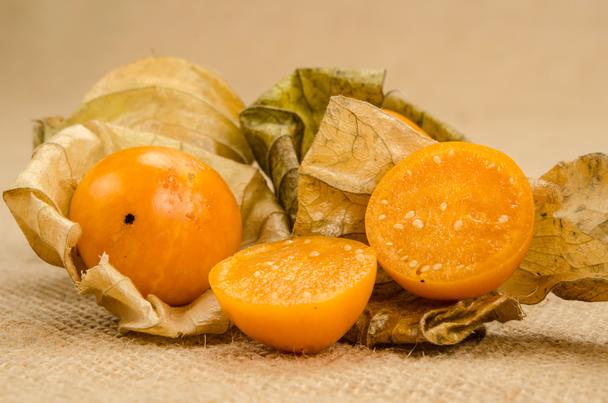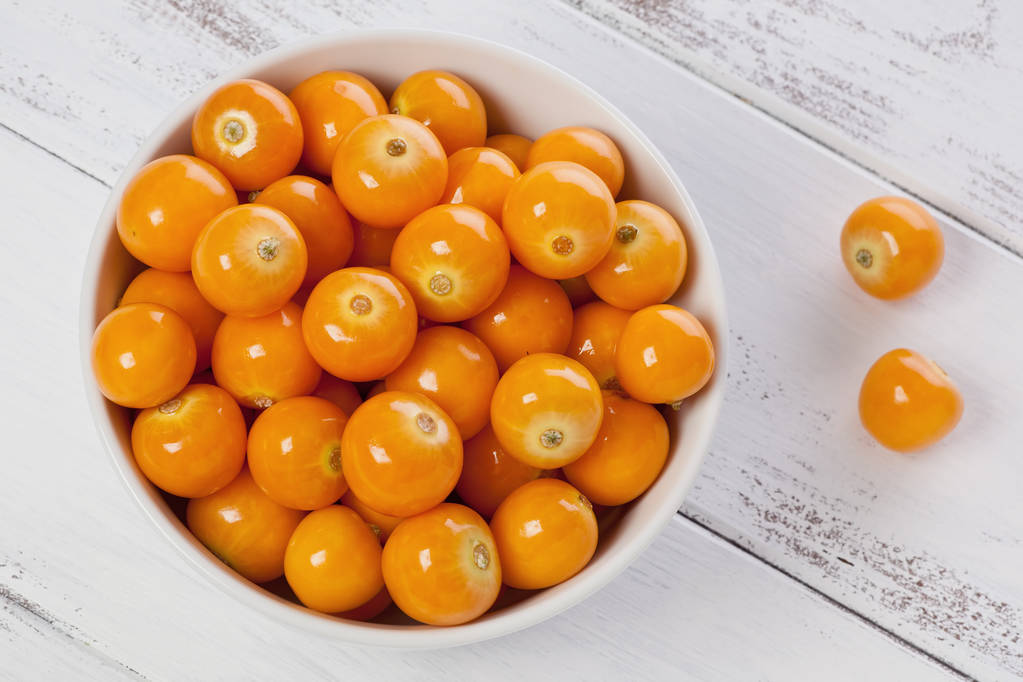Small, spherical and bright yellow-orange: The Physalis looks great. But how healthy is she? Find out more about the little power berries here.

Origin of the Physalis
The small, yellow-orange and spherical fruits are mainly known under the name “Physalis”. But what is actually meant by this is the genus, which includes the tomatillo and the earth cherry in addition to the berries.
The lesser-known name “Andean berry” goes back to the origin of the physalis: the Andes region in Chile and Peru. The physalis belongs to the nightshade family and is therefore related to the tomato. There are over 90 different types.
The bright fruits hide on the bush in lantern-like shells, which are green at first, turn yellow when ripe and then dry up and turn light brown. The fruit in each lantern grows as big as a cherry or cocktail tomato and is sold in the supermarket in its dried-up shell. The fruits have a soft, sticky skin and inside are up to 180 small, also edible seeds.
Andean berries have a citrusy, sweet and sour taste. It is best to eat them raw in muesli, in a fruit salad or as a garnish for desserts so that their nutrients are not destroyed by heating.
They are also suitable for making jams or chutneys.
Ingredients and nutritional values of physalis
With around 53 calories per 100 grams and 1 gram of fat per 100 grams, the Andean berry is a fairly low-calorie and low-fat fruit.
Other nutritional values per 100 grams are:
Carbohydrates: 13 g
Dietary fiber: 2 g
Egg white: 2 g
Fiber includes the pectins, which can help regulate blood lipid levels. Pectins are said to be able to lower cholesterol levels and also stimulate digestion.
Physalis are also full of vitamins (per 100g):
0.06 mg vitamin B1
28 mg vitamin C
0.04 mg vitamin B2
0.05 mg vitamin B6
0.5 mg vitamin E
8 µg folic acid
150mcg retinol
900 µg carotene
Physalis has a fairly high content of vitamin C, which is needed for various metabolic processes in the body and strengthens the immune system. Vitamin C is just as important for heart health and normal cholesterol levels as it is for the production of collagen, i.e. for firm skin.
The fruit also contains a lot of beta-carotene. It is the precursor of vitamin A, which is produced in the body and is responsible for good vision and cell growth. Vitamin A is also known to ensure beautiful hair.
Vitamin B1 ensures a healthy nervous system, strengthens muscle tissue and the immune system. It is also known as an anti-stress vitamin.
Vitamin B2 supports healthy hair, skin and nails.
Many minerals can also be found in physalis (per 100g):
5 mg sodium
170 mg of potassium
10 mg calcium
8 mg magnesium
40 mg phosphate
1.3 mg iron
0.1 mg zinc
Potassium is an important mineral involved in muscle activity and regulating blood pressure.
Phosphorus is a mineral that is absorbed from food as phosphate. Phosphorus helps the body build teeth and bones.

How sustainable are Physalis?
When we buy physalis in the supermarket, it mostly comes from Africa and South America. The physalis need heat to grow. At the same time, they also have a high water requirement and the soil must be rich in nutrients.
The long way that the physalis has to travel to us and the high water requirement in cultivation make the berries a not particularly sustainable affair. Physalis should therefore be an exception in the menu.
If you still want to regularly integrate physalis into your diet, you can also grow the Andean berry at home. They can also thrive in your own garden or in the balcony tub.
The plant needs to be in a warm, full sun and well-protected spot in nutrient-rich soil. Local physalis can then be harvested from August. However, the Physalis is not hardy.
